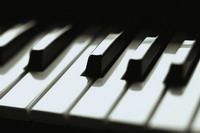Piano Sheets > Richard Wagner Sheet Music > Bridal Chorus (ver. 2) Piano Sheet
Bridal Chorus (ver. 2) by Richard Wagner - Piano Sheets and Free Sheet Music

About the Song
Other avaliable versions of this music sheet: Version 1 Version 2
The "Bridal Chorus" "Treulich geführt", from the 1850 opera Lohengrin, by German composer Richard Wagner, is a march played for the bride's entrance at many formal weddings throughout the Western world. In English-speaking countries it is generally known as "Here Comes the Bride" or "Wedding March" (though actually "wedding march" refers to any piece in march tempo accompanying the entrance or exit of the bride, notably Felix Mendelssohn's "Wedding March").
Its usual placement at the beginning of a wedding ceremony is not entirely in accordance with its placement in the opera. In the opera, the chorus is sung after the ceremony by the women of the wedding party, as they accompany the heroine Elsa to the bridal chamber. In addition, the marriage between Elsa and Lohengrin is an almost immediate failure.
The "Bridal Chorus" is seldom played at Jewish weddings. This is often because of cultural.
Download this sheet!
About the Artist

Random article
How to read sheet music How to read sheet music
Reading piano sheet music is no simple thing. For it first we require to know the individual elements of the composition itself in order to read sheet music. You must make sure that you are familiar with that particular composition's language before you tackle the entire piece.
In order to grasp the intent and nuances of the piece quickly for reading piano sheet music following steps are to be considered:-
1> To start with have a look over entire composition to get the feel of the length and style of the sheet music. This first run through is just to have a quick overview of the composer's work. This will slowly prepare you to read the sheet music.
(More...)
